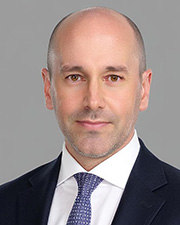
The Boston commercial real estate market is primed for a dynamic 2025, driven by its unique strengths in multifamily housing, healthcare and life sciences, or “beds, meds and sheds.” Despite challenges like the increase in interest rates and construction costs, Boston’s diverse economic base and culture of innovation continue to attract investors and developers.
Foundations of Resilience
Boston’s commercial real estate market has demonstrated adaptability in the face of macroeconomic headwinds. Elevated borrowing costs and inflationary pressures shaped the past year, yet key sectors showed resilience. Multifamily development thrived in transit-oriented areas, healthcare and life sciences maintained a stronghold in established clusters, and industrial properties benefited from urban demand for logistics. As we enter 2025, Boston’s commercial real estate landscape is poised to build on these foundations.
Multifamily: Transit-Oriented Growth with Challenges
Multifamily housing remains a cornerstone of Boston’s real estate market. Transit-oriented developments (TODs), particularly along the MBTA’s Green Line and Red Line extensions, are meeting the increasing demand for accessible housing. Areas like Somerville and Dorchester are emerging as focal points, offering opportunities for public-private partnerships to address housing shortages while unlocking value in underutilized parcels.
However, rising construction costs and evolving zoning regulations have pressured developers, while affordability concerns weigh on renters. As a result, investors must focus on innovative financing solutions and adaptive reuse projects, particularly in neighborhoods like Allston-Brighton, where opportunities for mixed-use development abound.
Healthcare & Life Sciences: Leading the Nation, Expanding the Footprint
Boston continues to dominate the life sciences sector, bolstered by over approximately $20 billion in annual NIH funding and a cluster of top-tier institutions. Submarkets like Kendall Sq. and the Seaport District remain hubs of activity, with reinvestments in aging properties positioning them to meet evolving tenant demands. Projects such as the redevelopment of 601 Congress St. illustrate the trend of repositioning older buildings into modern lab-ready spaces.
While demand for class A lab space remains strong, suburban markets are gaining traction as cost-effective alternatives. Additionally, aging healthcare infrastructure presents a significant opportunity for redevelopment. However, challenges such as rising financing costs and permitting delays require creative strategies, including joint ventures and public funding to modernize facilities and sustain growth.
Industrial: Creative Solutions for a Supply-Constrained Market
Boston’s industrial sector, fueled by e-commerce and life sciences supply chains, faces persistent challenges of land scarcity and high construction costs. With limited opportunities for new development, retrofitting obsolete properties near urban centers has become a critical strategy. Submarkets like Medford, Everett and Revere, close to Logan Airport, are emerging as hotspots for industrial expansion, particularly for logistics and cold storage facilities.
Sustainability is becoming a competitive edge in this sector, with developers integrating solar power and energy-efficient systems into retrofitted properties. The focus on sustainability not only addresses environmental concerns but also aligns with tenant preferences and regulatory trends.
Post-Election Economic Impacts
The post-election economic landscape could significantly influence Boston’s commercial real estate activity. If interest rates stabilize or decline, sidelined capital may re-enter the market, easing borrowing costs and unlocking development opportunities. Federal incentives for housing and infrastructure, potentially introduced under President Trump’s administration, could further stimulate growth. However, policy shifts might also exacerbate labor shortages and increase construction cost volatility, requiring careful navigation by industry participants.
Innovation Amid Complexity
As Boston heads into 2025, its commercial real estate market exemplifies the synergy of innovation, resilience and adaptability. Multifamily developments near transit hubs, reinvestments in life sciences facilities, and new approaches in industrial development present avenues for growth. However, success will depend on navigating regulatory hurdles, managing costs, and leveraging local knowledge to capitalize on opportunities.
Boston’s unique combination of academic, medical and industrial excellence positions it as a leader in real estate innovation. By embracing sustainability, fostering public-private collaborations, and addressing critical affordability and infrastructure gaps, all parties can ensure Boston remains a hub for commercial real estate investment and development in the years ahead.
Mark Green is chief investment officer for Cottonwood Group, Boston, Mass.








